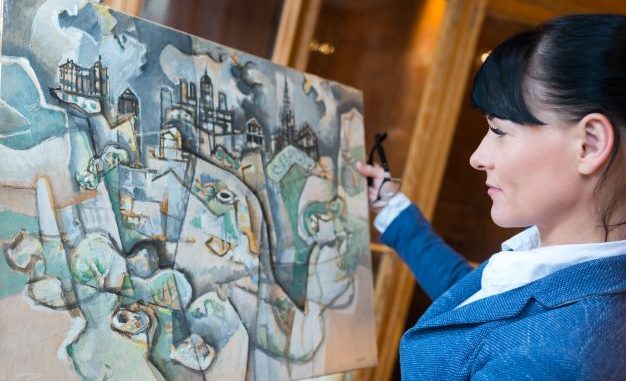
Discovering the Art World can be fascinating and intriguing – and not only for those who like wandering around galleries. While art lovers will find many personal reasons for investing in the Arts – finding solace among oil paintings, pleasure in decorative works, and feeling a shiver when they look at masterpieces – this is not the only side we can connect to the Arts. Art does not have a specific purpose. It is decorative, volatile, and overall, an infinite emotion generator. It makes us feel good, it is therapeutic… No matter how vague or complex it may be to define. Art is incredible and without artists and creativity, our world would be so bland.
However, Art isn’t only about untouchable emotions. It can be a real investment itself. It was always like this, but entering this new sparkling millennium, the digital landscape shaped opportunities never seen before for this market. Looking around art fairs, galleries and salerooms, you can easily perceive that investing in art nowadays can be as profitable as gambling within the stock exchange market.
The value of Art – as in general, any crafted object itself – is a concept that is as complex as it is to pin down its function. It is relative, subjective and changeable. The rating of artwork could fluctuate enormously. It can be appreciated in value depending on the context, the technique and the artist…But despite the importance of those relative variables, it is quite safe to say that the Art market has grown double figures as never seen before.
Truth is not so simple, always. The Arts cannot be seen as a series of interrelated factors. Indeed, the Art World is a field of subjective and emotional values which drive trends, collectors and markets. Yet the world of investments – made up of numbers, stocks, and assets – appears to be the exact opposite. It is a world of objective figures and statistics… In the end, why would someone feel safe mixing the two? Even though these two different fields give the idea of being in complete conflict with each other, Buying Art requires the consideration of blending subjective and objective values – merging emotional and commercial aspects together. Interestingly, a wider lens and some general guidelines can help new investors stay on track.
Especially those months, given that we are still facing insecurity and uncertainties due to the “Pandemic Era”, it is difficult to know how to start and where to turn. How can we navigate the Art World? Why should we invest in this subjective field? Why push the boundaries between passion and money? Daunting for some, the complexity of the Art World can put many people off. The unique profile of this subjective field is what makes it so interesting and exciting for many. There are some things you can keep in mind when thinking about investing in the Arts.
But the possibilities are endless nowadays, with the digital, the traditional and – especially – with the post-pandemic renaissance, Art World and Art Market are facing thrilling times. The pandemic emergency revolutionised the Art World completely, opening wide new opportunities also for new investors. Nonetheless, the shift to online platforms within the last 5-10 years and the expansion of digital market landscapes in any sectors, have allowed a significant recovery with numerous advantages, especially for new beginners and new collectors fascinated with the fact that today Investing in Arts is even more sustainable and profitable. So, new doors have opened up for those who are intrigued by the idea of buying Arts those days.